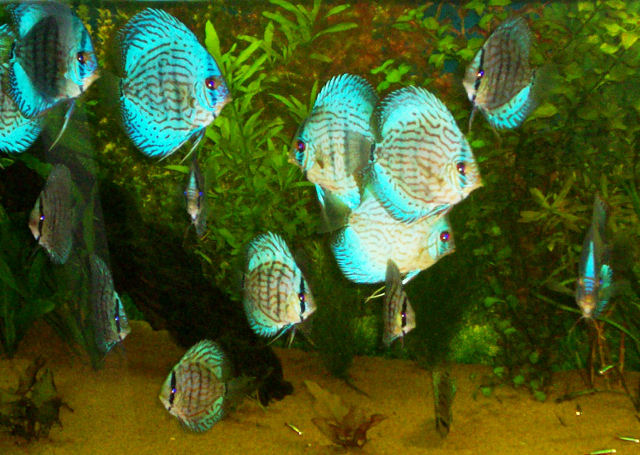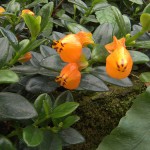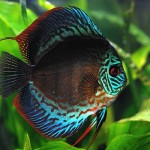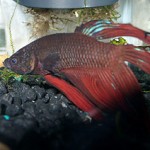One of the best-loved tropical fish available are the divine discus types of fish. If you typed discus fish into google you would likely be astonished at the diversity and vibrancy of these fish. If you are new to the variety of discus species, this article is for you as a profile for some of the types of discus out there.
Discus fish are brightly coloured with a striking shape that resembles a compact disc or Olympic discus. One of the other distinguishing features of discus types of fish is its long length of around 10 inches. Discus care can be tricky though and discus are one of the hardest to care for in a home environment.
The two basic discus types you can get are the wild ones and the cultivated ones. The terms wild and cultivated refer to where they came from, natural environments or by cross-breeding.
Taking the natural discus to begin, Johan Heckel was famed as being the first to discover the Discus fish. His was the Heckel Discus. This type of Discus has a dark stripe down the their side with a blue or red body. The descriptively named Green Discus come in a wide variety of greens with either stripes or spots down their side.
Brown discus are the ones you will encounter the most. These aren’t the most inspiring to look at, with their dull dark brown hue and just the odd flecks of colouring. They are one of the most hardy of discus types and therefore easier to keep. If brown isn’t for you, the Blue Discus are the same fish but, with a powerful blue colouring.
Wild discus types may come in a variety of shades and colourings, but the real fun begins when you look at the many cultivated discus types. The Albino Discus with its amazingly white body and alluring red eyes, is actually the most recent addition to the cultivated discus types.
If you want a bit of glitz and glamour in your home aquarium, then the Blue Diamond Discus are the ones for you. With a luscious blue colouring over its entire body, it also boasts much slimmer fins than other discus. This is where its name comes from-the twinkles it causes in the water as the light hits its fins.
Discus come in different varieties, both wild and cultivated. Discus care basics are a constant across the board. The tank size is important with discus fish due to the size they can grow, so aim for one that is medium to large. The water needs consideration as they are from South America and along the Amazon. The water there is called blackwater, due to its look and consistency. This can be achieved by purchasing special chemicals. The water should be reasonably hot all the time. Discus fish are not fussy eaters and will nibble away at live baby crickets and sea monkeys. To avoid parasites, it is better to stick to the specialist food available at fish and pet stores.
Discus fish are some of the most dazzling available, though it should be remembered how much work needs to go into keeping them well and alive. If you do choose discus types for your aquarium, you will not be disappointed.

















Leave a Reply